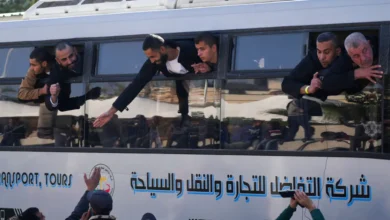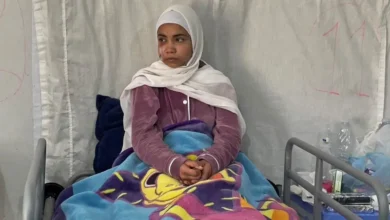Is the battle for Aleppo part of Syria’s war?

The surprise assault on the Syrian city of Aleppo by opposition forces on Wednesday appears to have caught the Syrian regime of Bashar al-Assad and his allies, as well as much of the world, off guard.
Currently, as the Syrian and Russian air forces pound opposition forces in northwest Syria, the brutal conflict that many had hoped had frozen since a ceasefire deal in 2020 is showing every sign of reigniting.
Is the current fighting part of Syria’s ongoing war?
Yes.
Syria’s revolution of 2011 failed to topple the country’s leader, Bashar al-Assad.
He leaned on the support of his allies, Russia, Iran and the Lebanese group Hezbollah, who joined his forces in trying to put down the uprising.
The fighting drew in both existing regional armed groups, such as ISIL (ISIS) and al-Qaeda – who established linkages to groups in Syria – and created new factions such as Hayat Tahrir al-Sham (HTS), who led last week’s attack on Aleppo.
However, as the conflict wore on, and Russian and Iranian firepower began to tilt the conflict in the regime’s favour, the bulk of those groups were pushed to the northwestern governorate of Idlib especially after they were routed from Aleppo in 2016 after nearly four years of fighting.
While various rebel factions competed for dominance in Idlib, HTS emerged as the dominant faction.
Formed in 2017 through the merging of various groups, chiefly Jabhat al-Nusra, the group works through the “Syrian Salvation Government” (the opposition’s government) to administer much of Idlib’s governance, including its security, financial and judicial systems.
Jabhat al-Nusra, which had long been associated with al-Qaeda, officially broke ties with the group before HTS’s formation, rebranding itself as Jabhat Fateh al-Sham, and then HTS.
How extreme has the war been?
Near-apocalyptic.
The UN estimates that, between March 2011 and March 2021, Syria’s war killed 306,887 civilians.
More than half of Syria’s pre-war population of 21 million was also displaced by the fighting.
Aspects of the fighting were unsurpassed in their savagery.
The regime used chemical weapons and barrel bombs against civilian areas as it fought, along with its allies, to suppress the rebellion against it, not succeeding in fully putting it down.
In the power vacuums that formed, armed groups flourished and ISIL gained a foothold, establishing a “caliphate” around the Syrian city of Raqqa in 2014, a presence that inflicted violence on minorities and only came to an end in 2017 after the Western-supported Syrian Democratic Forces drove ISIL out.










